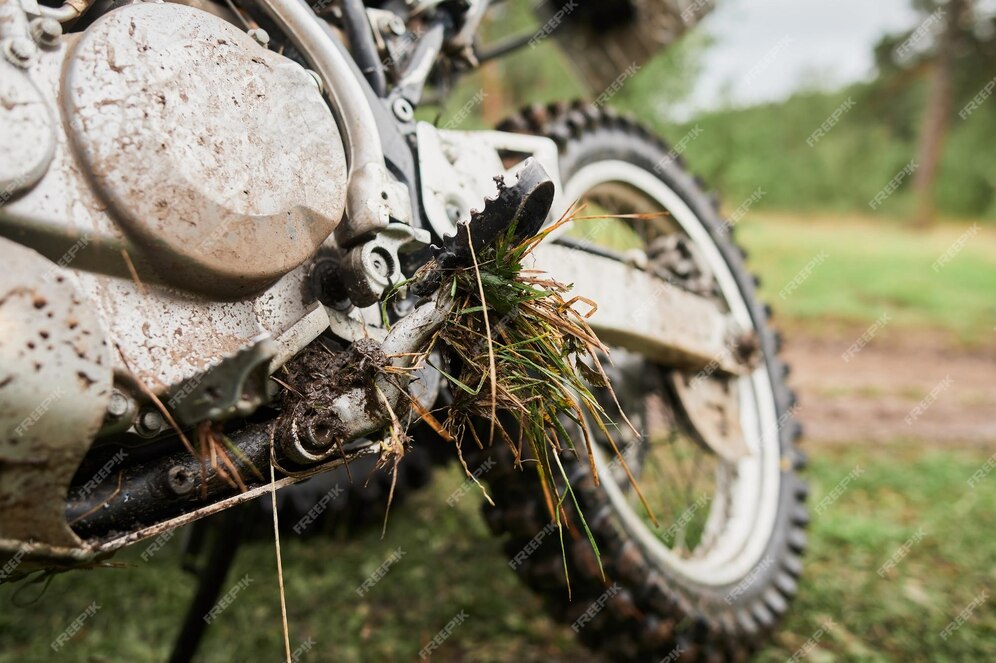Dirtbikes are built for adrenaline-pumping adventures, but nothing kills the thrill faster than a flooded engine. If you’ve ever turned the key (or kicked the starter) only to hear silence or sputtering, you’ve likely experienced this frustrating issue. But why do dirtbike engines flood, and how can you fix it?
In this guide, we’ll break down the science behind flooded engines, explore the most common causes, and provide actionable solutions to get you back on the trail in no time. Whether you’re a seasoned rider or a beginner, this article will equip you with the knowledge to tackle this problem head-on.
What Does It Mean When a Dirtbike Engine Floods?
A flooded engine occurs when too much fuel enters the combustion chamber, preventing the spark plug from igniting the air-fuel mixture. This excess fuel can soak the spark plug, making it impossible to start the bike.
Key Symptoms of a Flooded Engine:
- Difficulty starting the bike
- A strong smell of gasoline
- Sputtering or coughing sounds when trying to start
- Visible fuel leaking from the exhaust
7 Common Reasons Why Dirtbike Engines Flood
Understanding the root causes of a flooded engine is the first step to preventing it. Here are the top culprits:
1. Overuse of the Choke
The choke is designed to enrich the air-fuel mixture for cold starts. However, leaving it on for too long can flood the engine with excess fuel.
Fix: Turn off the choke after the engine warms up. If the engine is already flooded, wait 10-15 minutes before attempting to restart.
2. Faulty Carburetor Settings
A poorly tuned carburetor can deliver too much fuel, leading to flooding. This is especially common in older dirtbikes or aftermarket carburetors.
Fix: Adjust the carburetor’s air-fuel mixture screw or consult a mechanic for a professional tune-up.
3. Stuck or Worn Float Needle
The float needle regulates fuel flow into the carburetor. If it’s stuck or worn, fuel can overflow into the engine.
Fix: Inspect the float needle and replace it if necessary. Clean the carburetor to remove any debris causing the issue.
4. Frequent Starting Attempts
Repeatedly trying to start the bike without success can flood the engine with unburned fuel.
Fix: If the bike doesn’t start after a few attempts, wait a few minutes before trying again.
5. Incorrect Spark Plug Gap
A spark plug with an incorrect gap may fail to ignite the air-fuel mixture, causing fuel to accumulate in the combustion chamber.
Fix: Check the spark plug gap and adjust it according to your bike’s specifications. Replace the spark plug if it’s fouled.
6. Low Compression
Low engine compression can prevent proper combustion, leading to fuel buildup.
Fix: Perform a compression test and address any issues with the piston rings, cylinder, or valves.
7. Cold Weather Conditions
Cold temperatures can make starting harder, prompting riders to overuse the choke or throttle, which increases the risk of flooding.
Fix: Use the choke sparingly and allow the engine to warm up gradually.
How to Fix a Flooded Dirtbike Engine: Step-by-Step Guide
- Turn Off the Fuel Supply
Prevent more fuel from entering the engine by turning off the fuel valve. - Remove the Spark Plug
Unscrew the spark plug and inspect it for fuel saturation. Clean or replace it if necessary. - Dry the Combustion Chamber
Crank the engine a few times to expel excess fuel from the chamber. - Reinstall the Spark Plug
Once the chamber is dry, reinstall the spark plug and tighten it securely. - Restart the Bike
Turn on the fuel supply and start the bike without using the choke or throttle.
Prevention Tips to Avoid Engine Flooding
- Regular Maintenance: Clean and inspect the carburetor, spark plug, and fuel system regularly.
- Proper Choke Use: Only use the choke when necessary and turn it off once the engine warms up.
- Quality Fuel: Use fresh, high-quality fuel to prevent clogs and ensure efficient combustion.
- Warm Up the Engine: Allow the engine to warm up before riding, especially in cold weather.
Comparison Chart: Flooded Engine vs. Other Starting Issues
| Issue | Symptoms | Solution |
|---|---|---|
| Flooded Engine | Strong fuel smell, sputtering | Dry combustion chamber, replace spark plug |
| Dead Battery | No power, clicking sound | Recharge or replace battery |
| Clogged Fuel Line | Engine cranks but won’t start | Clean or replace fuel line |
| Faulty Ignition System | No spark, engine won’t fire | Inspect and repair ignition components |
Conclusion: Why Do Dirtbike Engines Flood?
A flooded dirtbike engine doesn’t have to ruin your ride. By understanding the causes and following the fixes outlined in this guide, you can quickly get back on the trail. Regular maintenance and proper starting techniques are key to preventing this issue in the future.
FAQs
Can a flooded engine damage my dirtbike?
While occasional flooding isn’t harmful, frequent flooding can lead to spark plug fouling and engine wear.
How long should I wait before restarting a flooded engine?
Wait at least 10-15 minutes to allow excess fuel to evaporate.
Is engine flooding more common in 2-stroke or 4-stroke dirtbikes?
Both can flood, but 2-stroke engines are slightly more prone due to their design.










